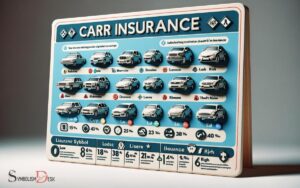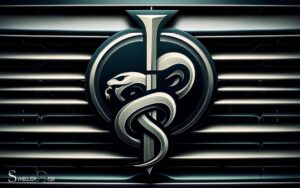Control and Information Device Symbols Car: Warning Lights!
Control and Information Device Symbols in cars, commonly known as dashboard warning lights, are vital indicators that alert drivers about the vehicle’s various system functions and potential issues.
These symbols range from seatbelt reminders and engine malfunction indicators to tire pressure warnings and anti-lock brake system alerts.
Understanding the meaning behind the various control and information device symbols in your car is crucial for safe driving and maintaining your vehicle’s health.
Here’s a brief overview of common symbols:
Understanding these symbols can help diagnose issues early and prevent further damage to the car, potentially avoiding costly repairs.
Recognizing car dashboard symbols is like understanding a vehicle’s language; it’s essential for ensuring the longevity and safety of your drive.
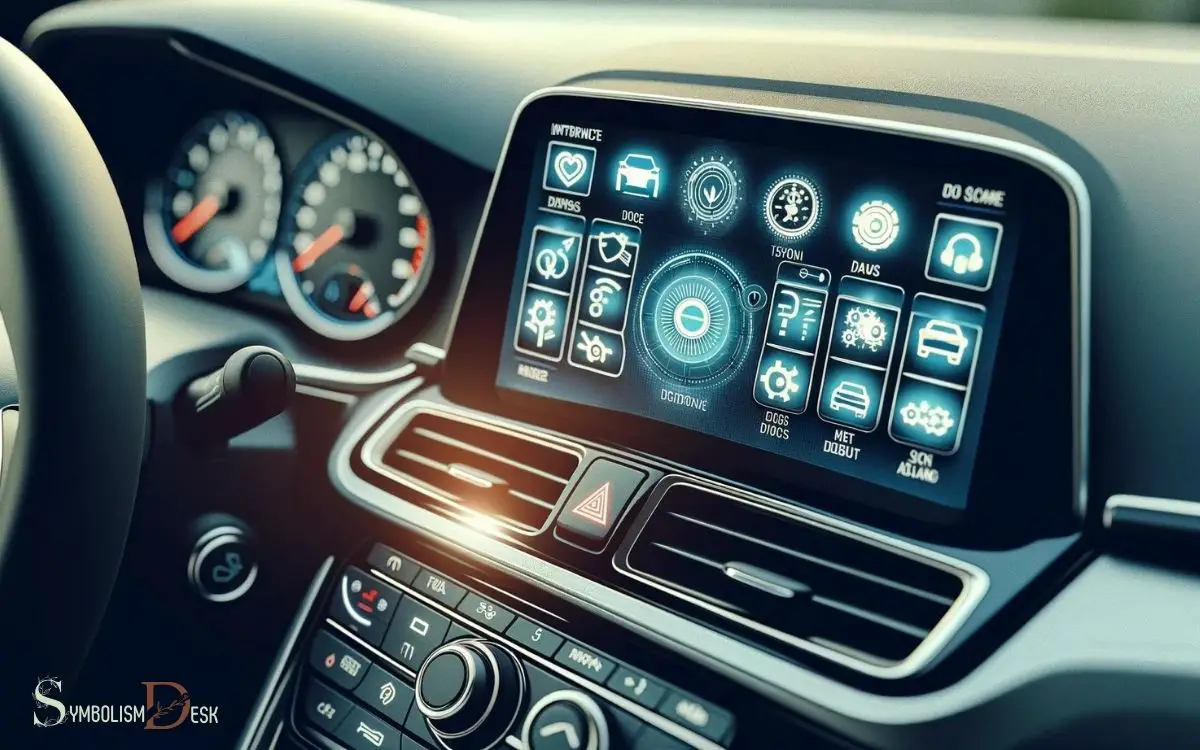
Key Takeaway
Dashboard Symbols
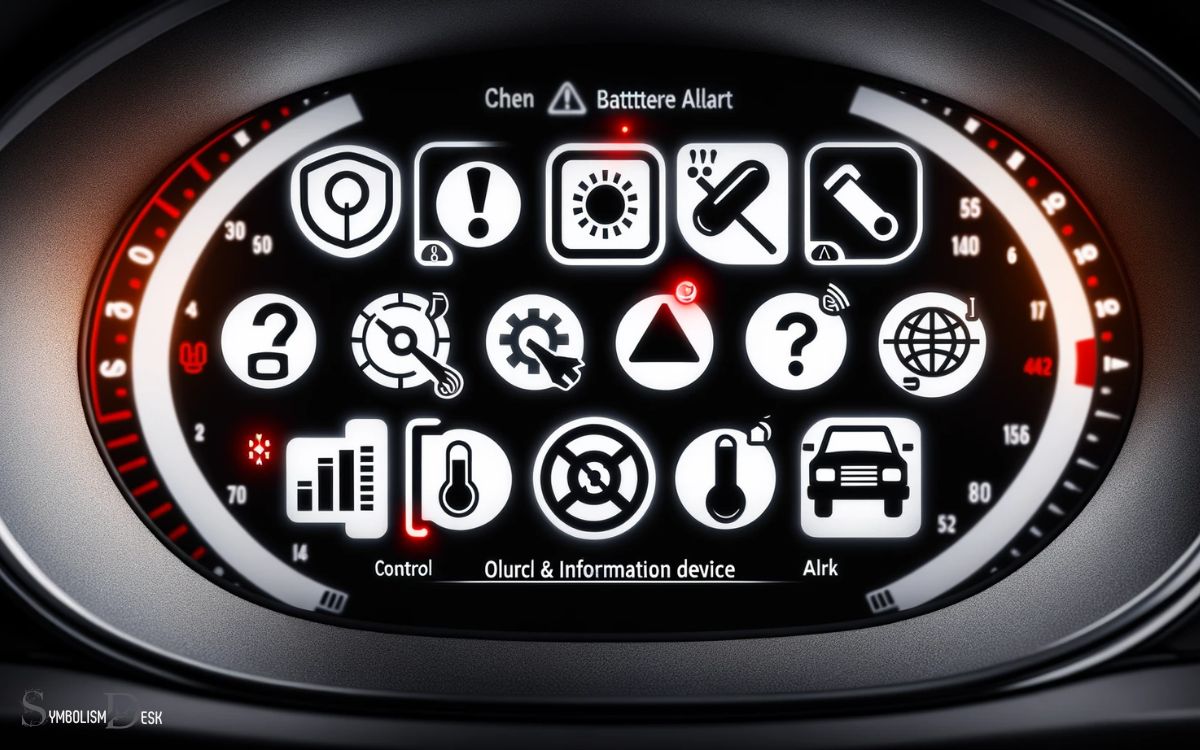
Dashboard symbols in a car indicate various functions and alerts to the driver. These symbols are designed to provide quick and clear information about the status of the vehicle.
For instance, the check engine light alerts the driver to potential issues with the engine, while the oil pressure warning symbol indicates a drop in oil pressure.
Understanding these symbols is crucial for maintaining the vehicle’s performance and safety. It is important for drivers to familiarize themselves with the meaning of these symbols to ensure they can respond appropriately to any alerts.
Additionally, some symbols may require immediate attention, while others may simply serve as reminders. Therefore, knowing the difference between these symbols can help drivers make informed decisions while on the road.
Steering Wheel Symbols
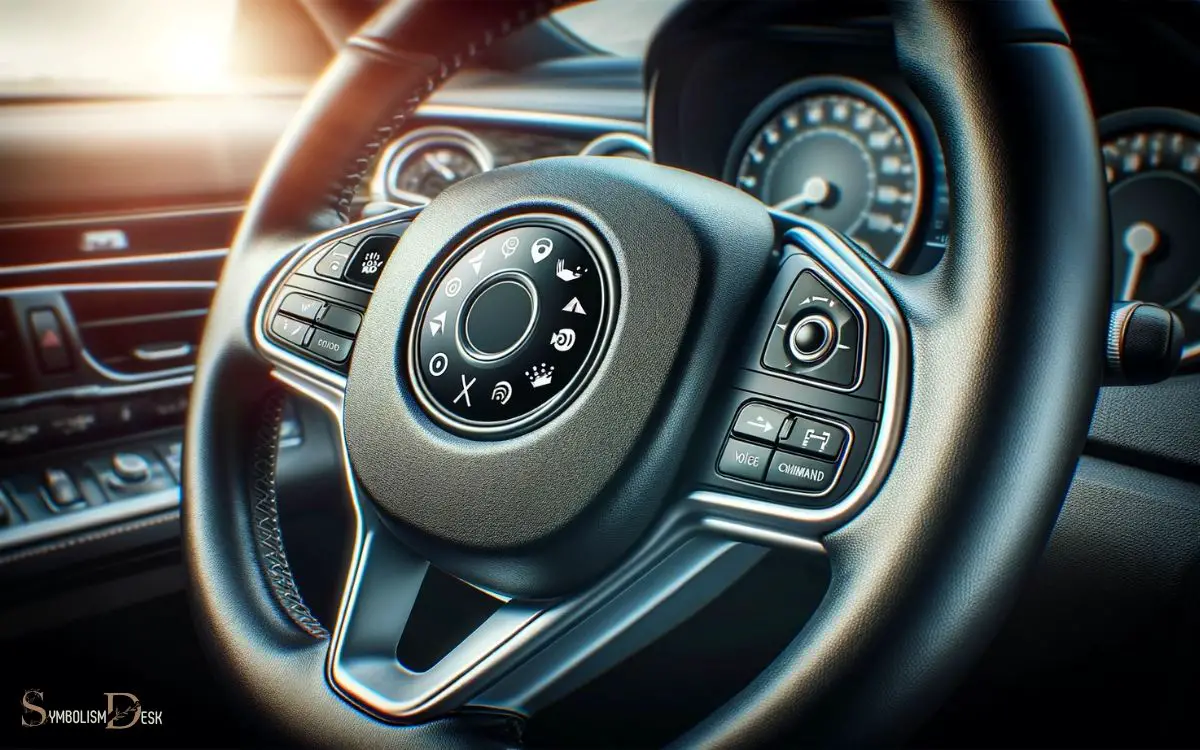
A few steering wheel symbols in a car can provide essential information and alerts to the driver. The most common symbol is the steering wheel with an exclamation mark, indicating an issue with the power steering system.
This could mean low power steering fluid or a problem with the steering mechanism that needs immediate attention.
Another important symbol is the steering wheel with an exclamation mark and a triangle around it, signifying a fault in the vehicle’s stability control system.
When this symbol appears, it is advisable to drive with caution and have the system checked by a professional.
Understanding these symbols can help drivers react promptly to potential issues, ensuring a safer driving experience.
Warning and Alert Symbols
The red triangle icon, exclamation mark symbol, and caution light indicator are all important warning and alert symbols found in modern cars. These indicators serve to notify drivers of potential issues or necessary maintenance to ensure safe operation of their vehicles. For example, the BMW yellow car lift fault symbol specifically alerts the driver to a problem related to the vehicle’s lifting system or jack mode. Addressing such warnings promptly can help prevent further damage and maintain the car’s overall performance.
These symbols are designed to grab the driver’s attention and indicate a potential issue or hazard that needs to be addressed. Understanding the meaning behind these symbols can help drivers stay safe and maintain their vehicles effectively.
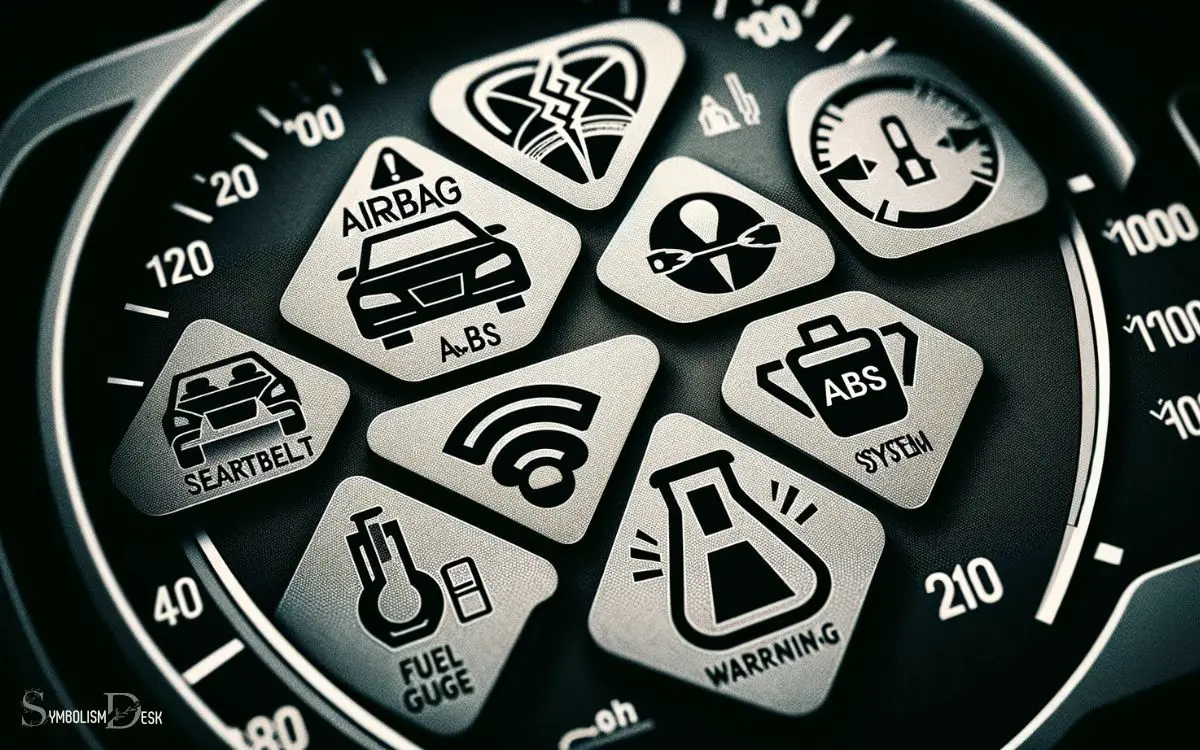
Red Triangle Icon
Displayed prominently within the car’s control and information device symbols, the red triangle icon serves as a warning and alert symbol.
When this icon illuminates on the dashboard, it indicates a potential issue that requires the driver’s attention. Commonly, it signifies a fault in the vehicle’s electronic stability control or traction control system.
In some models, it may also indicate an issue with the brake system. The red triangle icon is designed to alert the driver to take necessary precautions and seek immediate inspection or repairs.
It’s crucial for drivers to familiarize themselves with the meaning of this symbol in their specific vehicle, as ignoring it could lead to safety risks or damage to the car. Understanding these symbols can contribute to safe and efficient driving practices.
Exclamation Mark Symbol
Prominently featured within the car’s control and information device symbols is the exclamation mark symbol, signaling warnings and alerts to the driver. When this symbol illuminates on the dashboard, it indicates a potential issue that requires attention.
The exclamation mark symbol can represent various warnings such as low tire pressure, malfunctioning brakes, or low oil pressure. It is essential for drivers to familiarize themselves with this symbol and consult the car’s manual to understand the specific issue indicated.
Ignoring these warnings can lead to serious consequences, including vehicle damage or accidents.
Therefore, when the exclamation mark symbol appears, it is crucial for the driver to address the underlying problem promptly to ensure both their safety and the proper functioning of the vehicle.
Caution Light Indicator
Drivers should be familiar with the caution light indicator, as it provides critical warnings and alerts through various symbols on the dashboard.
These symbols are designed to inform the driver about potential issues with the vehicle that may require immediate attention. Below is a table highlighting some common caution light indicators and their meanings:
These symbols are essential for ensuring the safety and maintenance of the vehicle. Drivers should promptly address any issues indicated by these caution lights.
Indicator and Information Symbols
Indicator and information symbols are essential components of modern vehicle control systems. These symbols convey important details to the driver, enhancing safety and convenience.
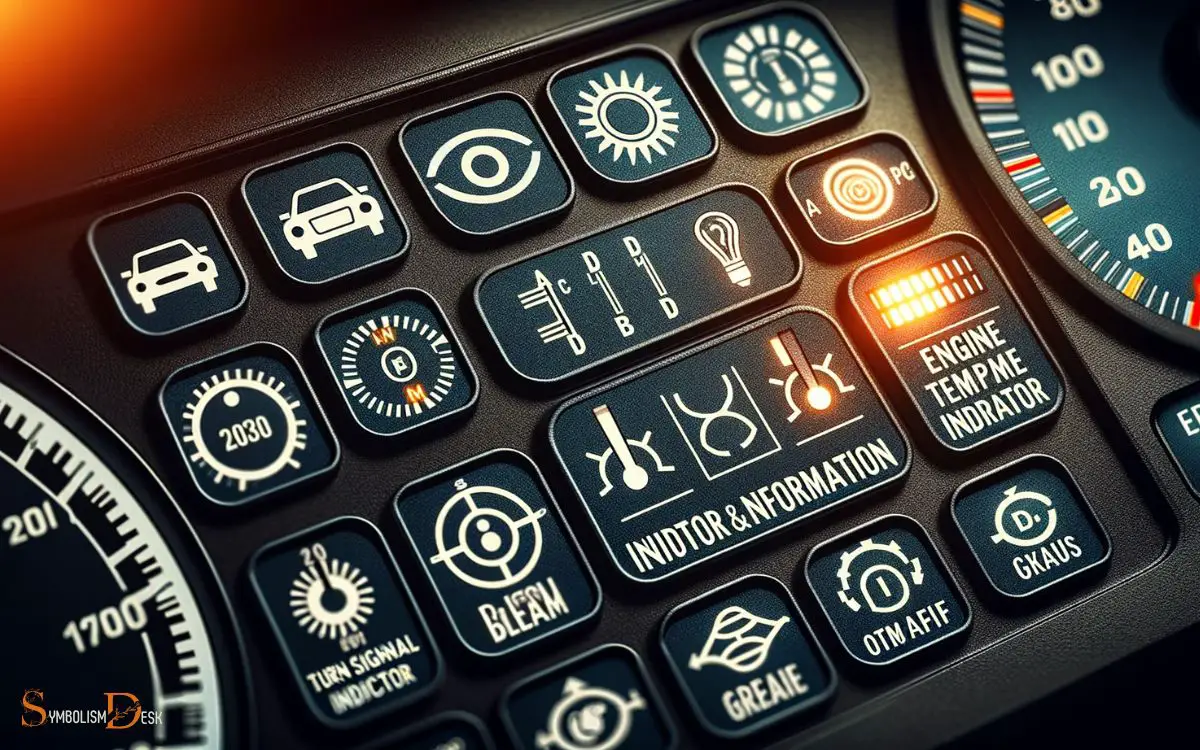
Here are three crucial types of indicator and information symbols:
- Warning Symbols: These alert the driver about potential issues with the vehicle, such as low fuel, engine problems, or low tire pressure.
- Information Symbols: These provide general information to the driver, such as turn signal status, high beam engagement, or seatbelt reminders.
- Notification Symbols: These indicate non-urgent notifications, such as cruise control activation, door ajar warnings, or parking brake engagement.
Understanding these symbols is vital for safe and efficient driving, ensuring that drivers can respond appropriately to various situations on the road.
Control Panel Symbols
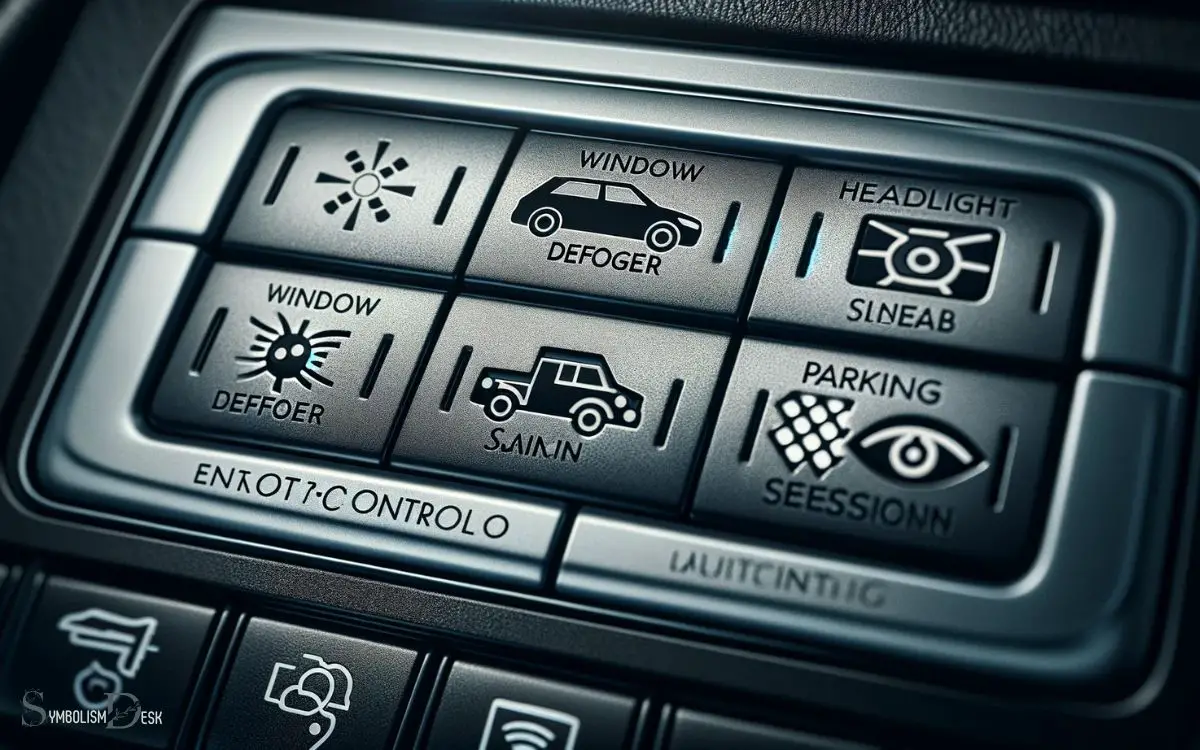
When discussing control panel symbols in modern vehicles, it is important to understand their function and interpretation for effective vehicle operation.
These symbols are designed to convey important information about the vehicle’s status and functions at a glance.
Common control panel symbols include those for the engine temperature, oil pressure, battery charge, and various warning lights for issues like low fuel or tire pressure.
Understanding these symbols is crucial for maintaining the vehicle’s optimal performance and ensuring safety on the road.
Drivers should familiarize themselves with the meanings of these symbols as part of their vehicle knowledge.
Consult the vehicle’s manual for specific symbol interpretations, and if a new symbol appears while driving, it is advisable to address it promptly to prevent any potential issues.
Multimedia and Entertainment Symbols
One might encounter various multimedia and entertainment symbols in a car’s control panel, providing quick access to audio, video, and communication features.
These symbols are designed to enhance the driving experience by providing easy and convenient access to entertainment options.
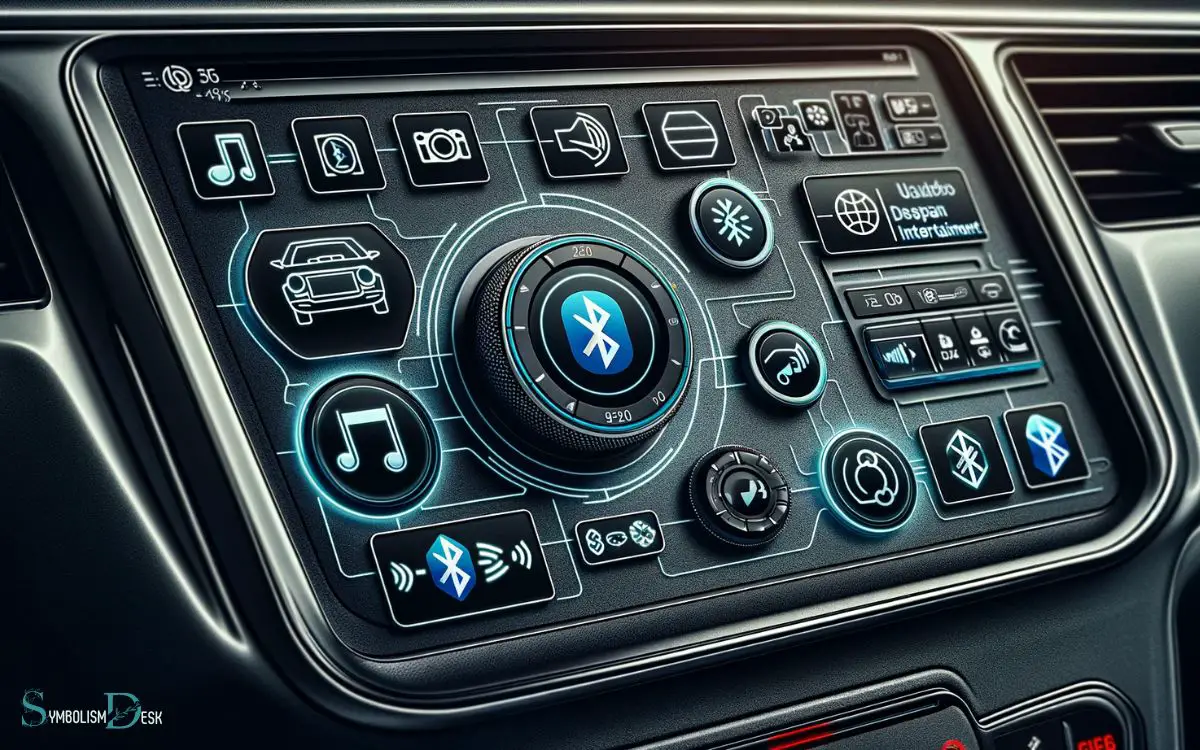
Some common multimedia and entertainment symbols found in a car’s control panel include:
- Audio: Symbols for adjusting the volume, changing audio sources, and controlling the radio or music playback.
- Video: Symbols related to video playback, such as DVD or Blu-ray controls, rear-seat entertainment system settings, and video input sources.
- Communication: Symbols for hands-free calling, voice command activation, and Bluetooth connectivity for mobile devices.
These symbols are essential for drivers and passengers to navigate the multimedia and entertainment features of the vehicle safely and efficiently.
Conclusion
As drivers navigate the roads, they rely on the control and information device symbols in their cars to guide them.
Just as these symbols provide direction on the road, we can find symbols in our own lives to help guide us through the twists and turns.
Whether it’s a warning sign or an indicator of opportunity, paying attention to the symbols around us can lead to a safer and more fulfilling journey.




